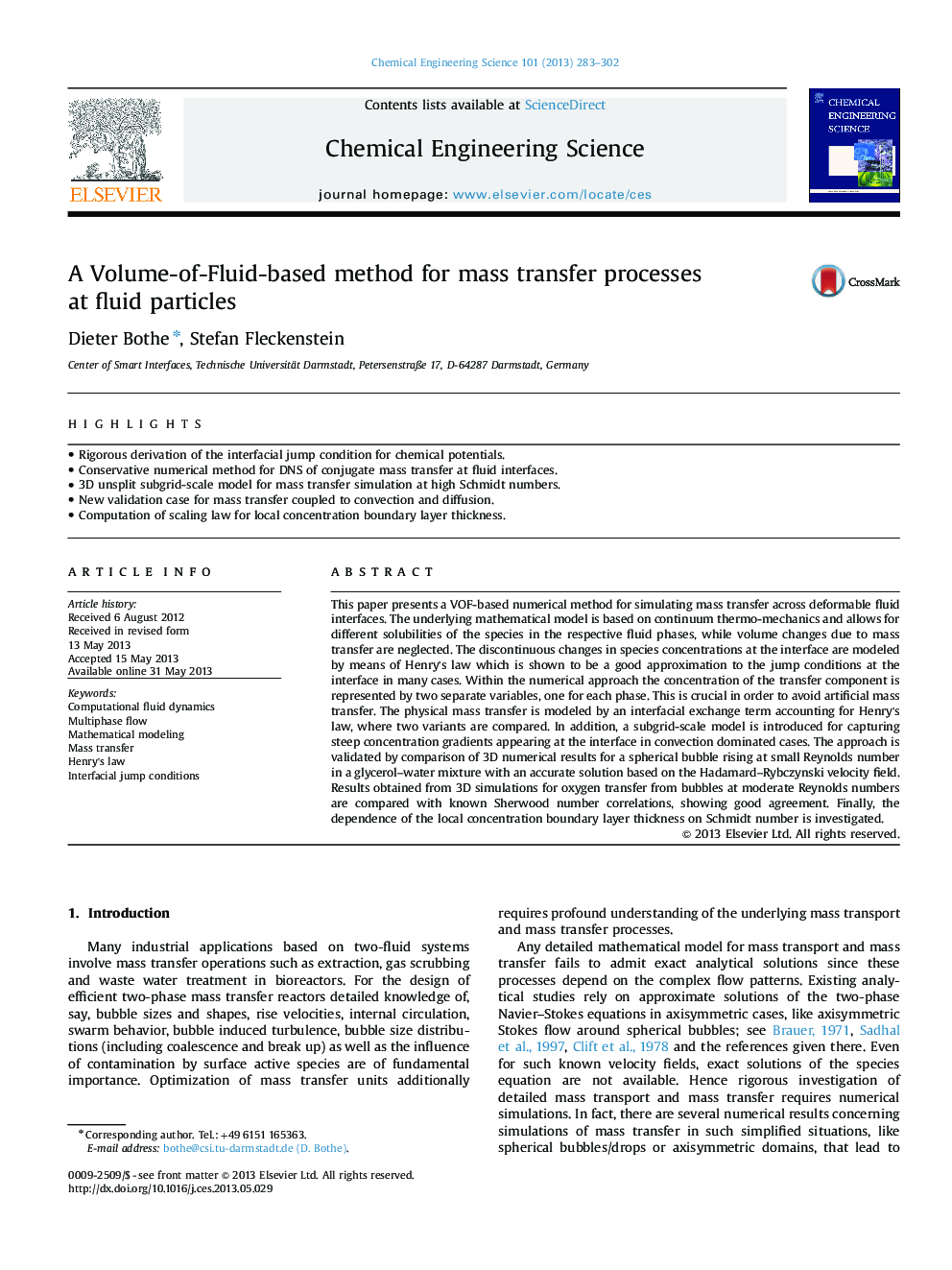| Article ID | Journal | Published Year | Pages | File Type |
|---|---|---|---|---|
| 6591964 | Chemical Engineering Science | 2013 | 20 Pages |
Abstract
This paper presents a VOF-based numerical method for simulating mass transfer across deformable fluid interfaces. The underlying mathematical model is based on continuum thermo-mechanics and allows for different solubilities of the species in the respective fluid phases, while volume changes due to mass transfer are neglected. The discontinuous changes in species concentrations at the interface are modeled by means of Henry's law which is shown to be a good approximation to the jump conditions at the interface in many cases. Within the numerical approach the concentration of the transfer component is represented by two separate variables, one for each phase. This is crucial in order to avoid artificial mass transfer. The physical mass transfer is modeled by an interfacial exchange term accounting for Henry's law, where two variants are compared. In addition, a subgrid-scale model is introduced for capturing steep concentration gradients appearing at the interface in convection dominated cases. The approach is validated by comparison of 3D numerical results for a spherical bubble rising at small Reynolds number in a glycerol-water mixture with an accurate solution based on the Hadamard-Rybczynski velocity field. Results obtained from 3D simulations for oxygen transfer from bubbles at moderate Reynolds numbers are compared with known Sherwood number correlations, showing good agreement. Finally, the dependence of the local concentration boundary layer thickness on Schmidt number is investigated.
Related Topics
Physical Sciences and Engineering
Chemical Engineering
Chemical Engineering (General)
Authors
Dieter Bothe, Stefan Fleckenstein,
